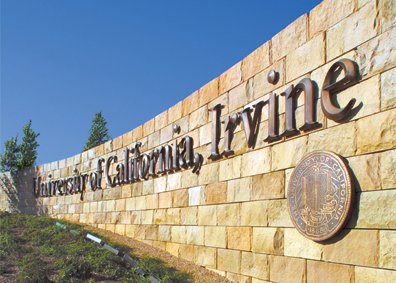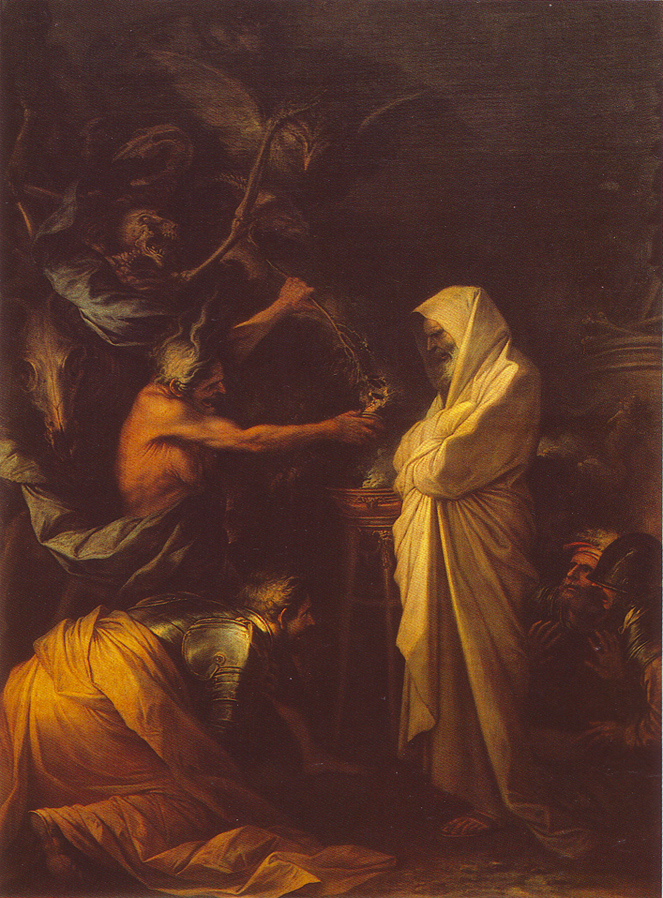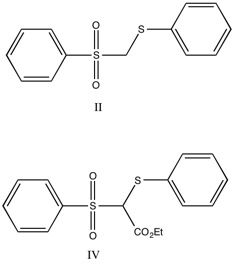|
Larry E. Overman
Larry E. Overman is Distinguished Professor of Chemistry at the University of California, Irvine. He was born in Chicago in 1943. Overman obtained a B.A. degree from Earlham College in 1965, and he completed his Ph.D. in chemistry from the University of Wisconsin–Madison in 1969, under Howard Whitlock Jr. Professor Overman is a member of the United States National Academy of Sciences and the American Academy of Arts and Sciences. He was the recipient of the Arthur C. Cope Award in 2003, and he was awarded the Tetrahedron Prize for Creativity in Organic Chemistry for 2008. Overman's research is focused on the development of new chemical reactions, particularly transition metal catalysis, catalyzed reactions, and the application of those reactions toward the organic synthesis, synthesis of natural products. Overman is most known for the Overman rearrangement, a Claisen rearrangement of allylic Alcohol (chemistry), alcohols to give allylic trichloroacetamides. Career Overma ... [...More Info...] [...Related Items...] OR: [Wikipedia] [Google] [Baidu] |
University Of California, Irvine
The University of California, Irvine (UCI or UC Irvine) is a Public university, public Land-grant university, land-grant research university in Irvine, California, United States. One of the ten campuses of the University of California system, UCI offers 87 undergraduate degrees and 129 graduate and professional degrees, and roughly 30,000 undergraduates and 7,000 graduate students were enrolled at UCI as of Fall 2024. The university is Carnegie Classification of Institutions of Higher Education, classified among "R1: Doctoral Universities – Very high research activity" and had $609.6 million in research and development expenditures in 2023, ranking it 56th nationally. UCI became a member of the Association of American Universities in 1996. The university administers the UC Irvine Medical Center, a large teaching hospital in Orange, California, Orange, and UC Irvine Health Sciences, its affiliated health sciences system; the University of California, Irvine, Arboretum; and a po ... [...More Info...] [...Related Items...] OR: [Wikipedia] [Google] [Baidu] |
Squalene Oxide
(''S'')-2,3-Oxidosqualene ((''S'')-2,3-epoxysqualene) is an intermediate in the synthesis of the cell membrane sterol precursors lanosterol and cycloartenol, as well as saponins. It is formed when squalene is oxidized by the enzyme squalene monooxygenase. 2,3-Oxidosqualene is the substrate of various oxidosqualene cyclases, including lanosterol synthase, which produces lanosterol, a precursor to cholesterol. The stereoisomer In stereochemistry, stereoisomerism, or spatial isomerism, is a form of isomerism in which molecules have the same molecular formula and sequence of bonded atoms (constitution), but differ in the three-dimensional orientations of their atoms in ... (''R'')-2,3-oxidosqualene is an inhibitor of lanosterol synthase. References External links Oxidosqualene cyclase, PDB December 2007 Molecule of the Month {{DEFAULTSORT:Oxidosqualene, 2,3- Epoxides Triterpenes Polyenes ... [...More Info...] [...Related Items...] OR: [Wikipedia] [Google] [Baidu] |
Strychnine
Strychnine (, , American English, US chiefly ) is a highly toxicity, toxic, colorless, bitter, crystalline alkaloid used as a pesticide, particularly for killing small vertebrates such as birds and rodents. Strychnine, when inhaled, swallowed, or absorbed through the eyes or mouth, causes Strychnine poisoning, poisoning which results in muscular convulsions and eventually death through asphyxia. While it is no longer used medicinally, it was used historically in small doses to strengthen muscle contractions, such as a heart and bowel stimulant and performance-enhancing drug. The most common source is from the seeds of the ''Strychnos nux-vomica'' tree. Biosynthesis Strychnine is a terpene indole alkaloid belonging to the ''Strychnos'' family of ''Corynanthe'' alkaloids, and it is derived from tryptamine and secologanin. The biosynthesis of strychnine was solved in 2022. The enzyme, strictosidine synthase, catalyzes the condensation of tryptamine and secologanin, followed by ... [...More Info...] [...Related Items...] OR: [Wikipedia] [Google] [Baidu] |
Gephyrotoxin
Gephyrotoxin is a naturally occurring product that stems from the Colombian tropical frog '' Dendrobates histrionicus''. It is a member of the class of compounds known as histrionicotoxins. This alkaloid skin secretion was first isolated from the tropical frog in 1977 by Daly and his fellow workers. Biological uses This compound is a relatively non-toxic chemical. At first it showed activity as a slight muscarinic antagonist, but with recent studies it has shown other interesting neurological activities. Due to these new activities, many laboratories want to conduct future research on it. Due to this demand and the scarcity and lack of abundance of the tree frog the synthesis of this product is of much interest. Synthesis The first total synthesis of gephyrotoxin was performed by Kishi and his co-workers, here they prepped an intermediate from L-pyroglutamic acid in 18 steps. Others have made it to the same intermediate in fewer steps but have included poorly diastereoselec ... [...More Info...] [...Related Items...] OR: [Wikipedia] [Google] [Baidu] |
Samuel J
Samuel is a figure who, in the narratives of the Hebrew Bible, plays a key role in the transition from the biblical judges to the United Kingdom of Israel under Saul, and again in the monarchy's transition from Saul to David. He is venerated as a prophet in Judaism, Christianity, and Islam. In addition to his role in the Bible, Samuel is mentioned in Jewish rabbinical literature, in the Christian New Testament, and in the second chapter of the Quran (although the text does not mention him by name). He is also treated in the fifth through seventh books of '' Antiquities of the Jews'', written by the Jewish scholar Josephus in the first century. He is first called "the Seer" in 1 Samuel 9:9. Biblical account Family Samuel's mother was Hannah and his father was Elkanah. Elkanah lived at Ramathaim in the district of Zuph. His genealogy is also found in a pedigree of the Kohathites (1 Chronicles 6:3–15) and in that of Heman the Ezrahite, apparently his grandson (1 Chro ... [...More Info...] [...Related Items...] OR: [Wikipedia] [Google] [Baidu] |
Pumiliotoxin
Pumiliotoxins (PTXs), are one of several toxins found in the skin of poison dart frogs. The frog species, Bibron's toadlet, P. bibronii also produces PTXs to deter predators. Closely related, though more toxic, are allopumiliotoxins, (aPTXs). Other toxins found in the skin of poison frogs include decahydroquinolines (DHQs), izidines, coccinellines, and spiropyrrolizidine alkaloids. Pumiliotoxins are poisonous in high concentrations. Pumiliotoxins are much weaker than batrachotoxins, ranging between 100 and 1000 times less poisonous. Structure The different divisions of compounds in the pumiliotoxin-A class arise from differences in the carbon backbone and/or the substituents attached to it. The difference between allopumiliotoxins and pumiliotoxins occurs at the 7 position. At this position, pumiliotoxins have a hydrogen whereas allopumiliotoxins have a hydroxyl substituent. Both have methyl and hydroxyl groups at the C-8 position. Homopumiliotoxins contain a quinolizidine ri ... [...More Info...] [...Related Items...] OR: [Wikipedia] [Google] [Baidu] |
Heck Reaction
The Heck reaction (also called the Mizoroki–Heck reaction) is the chemical reaction of an unsaturated halide (or triflate) with an alkene in the presence of a base and a palladium catalyst to form a substituted alkene. It is named after Tsutomu Mizoroki and Richard F. Heck. Heck was awarded the 2010 Nobel Prize in Chemistry, which he shared with Ei-ichi Negishi and Akira Suzuki, for the discovery and development of this reaction. This reaction was the first example of a carbon-carbon bond-forming reaction that followed a Pd(0)/Pd(II) catalytic cycle, the same catalytic cycle that is seen in other Pd(0)-catalyzed cross-coupling reactions. The Heck reaction is a way to substitute alkenes. History The original reaction by Tsutomu Mizoroki (1971) describes the coupling between iodobenzene and styrene in methanol to form stilbene at 120 °C ( autoclave) with potassium acetate base and palladium chloride catalysis. This work was an extension of earlier work by Fu ... [...More Info...] [...Related Items...] OR: [Wikipedia] [Google] [Baidu] |
Cope Rearrangement
A cope ( ("rain coat") or ("cape")) is a liturgical long mantle or cloak, open at the front and fastened at the breast with a band or clasp. It may be of any liturgical colour. A cope may be worn by any rank of the Catholic or Anglican clergy, and by licensed lay ministers on certain occasions. If worn by a bishop, it is generally accompanied by a mitre. The clasp, which is often highly ornamented, is called a ''morse''. In art, angels are often shown wearing copes, especially in Early Netherlandish painting. History There has been little change in the character of the cope since it was first worn by the clergy. It was made of a semicircular piece of silk or other material, its shape distinguishing it from the chasuble, which had straight edges sewn together in front. Both garments are similar in form and origin to the Orthodox phelonion. Modern copes no longer have a hood. Some early examples feature a triangular hood, which was intended to protect the head during pro ... [...More Info...] [...Related Items...] OR: [Wikipedia] [Google] [Baidu] |
Journal Of The American Chemical Society
The ''Journal of the American Chemical Society'' (also known as JACS) is a weekly peer-reviewed scientific journal that was established in 1879 by the American Chemical Society. The journal has absorbed two other publications in its history, the ''Journal of Analytical and Applied Chemistry'' (July 1893) and the ''American Chemical Journal'' (January 1914). It covers all fields of chemistry. Since 2021, the editor-in-chief is Erick M. Carreira (ETH Zurich). In 2014, the journal moved to a hybrid open access publishing model. Abstracting and indexing The journal is abstracted and indexed in: According to the ''Journal Citation Reports'', the journal has a 2023 impact factor The impact factor (IF) or journal impact factor (JIF) of an academic journal is a type of journal ranking. Journals with higher impact factor values are considered more prestigious or important within their field. The Impact Factor of a journa ... of 14.4. Editors-in-chief The following people are or ... [...More Info...] [...Related Items...] OR: [Wikipedia] [Google] [Baidu] |
Cyclodextrin
Cyclodextrins are a family of cyclic oligosaccharides, consisting of a macrocycle, macrocyclic ring of glucose subunits joined by α-1,4 glycosidic bonds. Cyclodextrins are produced from starch by enzyme, enzymatic conversion. They are used in food, pharmaceutical, drug delivery, and chemical industries, as well as agriculture and environmental engineering. Cyclodextrins are composed of 5 or more α-D-glucoPyranose, pyranoside units linked 1 → 4, as in amylose (a fragment of starch). Typical cyclodextrins contain a number of glucose monomers ranging from six to eight units in a ring, creating a cone shape: * α-Cyclodextrin, α (alpha)-cyclodextrin: 6 glucose subunits * β-Cyclodextrin, β (beta)-cyclodextrin: 7 glucose subunits * γ-Cyclodextrin, γ (gamma)-cyclodextrin: 8 glucose subunits The largest well-characterized cyclodextrin contains 32 1,4-anhydroglucopyranoside units. Poorly-characterized mixtures, containing at least 150-membered cyclic oligosaccharides are also ... [...More Info...] [...Related Items...] OR: [Wikipedia] [Google] [Baidu] |
Ronald Breslow
Ronald Charles David Breslow (March 14, 1931 – October 25, 2017) was an American chemist from Rahway, New Jersey. He was University Professor at Columbia University, where he was based in the Department of Chemistry and affiliated with the Departments of Biological Sciences and Pharmacology; he had also been on the faculty of its Department of Chemical Engineering. He had taught at Columbia since 1956 and was a former chair of the university's chemistry department. Life and career Breslow was born in Rahway, New Jersey, the son of Gladys (Fellows) and Alexander E. Breslow. He was interested in the design and synthesis of new molecules with interesting properties, and the study of these properties. Examples include the cyclopropenyl cation, the simplest aromatic system and the first aromatic compound prepared with other than six electrons in a ring. His seminal contributions include the correct site of reactivity of thiamin diphosphate in enzymes that promote the decarboxylati ... [...More Info...] [...Related Items...] OR: [Wikipedia] [Google] [Baidu] |





